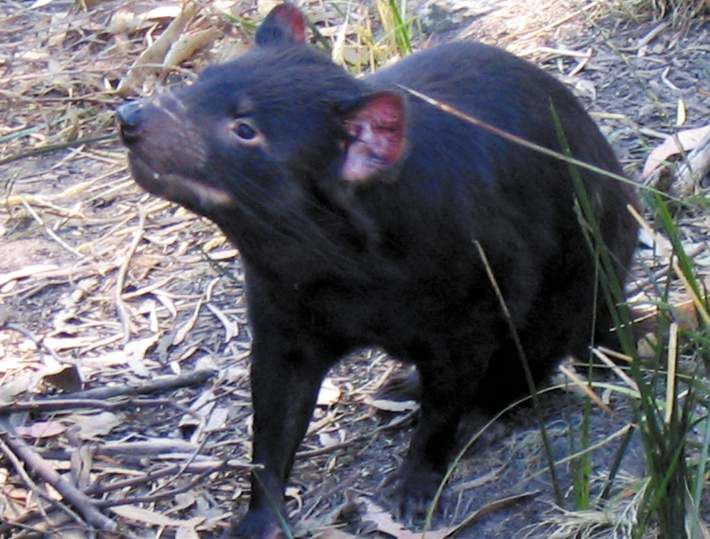Tasmanian devils given hope against a deadly cancer
Published 4:10 am Monday, November 24, 2008

- Cedric, a 3-year-old Tasmanian devil, has been able to mount an antibody response to devil facial tumor disease, blamed for a precipitous decline in the devil population.
They’re inky black, pointy-eared, furry and, in a fierce sort of way, cute. And in May of this year, they were added to Australia’s endangered species list.
Ordinarily solitary, Tasmanian devils commune only to feast on carrion and to mate in short-lived passionate couplings during which they tear each other to ribbons. Their spine-decalcifying caterwauls — a sequence of whuffings, snarlings and growlings — have evoked satanic visions since the first European settlers arrived on the island of Tasmania more than a century ago.
“Parents used to tell their kids: ‘Don’t go out into the bush because the devil will get you,’” recalled Dr. Greg Woods, an associate professor of immunology at Menzies Research Institute in Hobart, Tasmania’s capital.
But in the past decade, the Tasmanian devil has been trapped in a purgatory of its own. Since 1996, a deadly cancer, devil facial tumor disease, has preyed on the devil. Its population plummeted to fewer than 50,000 from about 150,000, said Dr. Hamish McCallum, senior scientist with the Devil Facial Tumour Disease Program at the University of Tasmania.
The devils’ situation is dire. Yet, as more has been learned about the disease, hope has appeared. Scientists have begun an experimental inoculation program, and this year, Woods identified one devil able to mount an antibody response to the tumor.
The devil, Cedric, is a 3-year-old male from western Tasmania who has been living in captivity for several months. Woods inoculated Cedric and his half-brother, Clinky, who was also disease-free at the time, with irradiated — that is, dead — devil tumor cells. Although they had the same mother, Cedric and Clinky had different fathers. Woods repeated the vaccination three times.
He then administered live tumor cells to both. Cedric mounted an immune response and lived. Clinky did not develop an immune response, and he succumbed to the cancer. His father’s genetics made Clinky’s immune system more like that of the devils found in eastern Tasmania.
All mammalian immune systems rely on certain cells to recognize invaders. Demarcation of “otherness” at the cellular level is carried out in a part of the mammalian genome called the major histocompatibility complex, or MHC. An animal’s ability to fight off disease depends on this group of genes. MHC is responsible for the cell markers that flag the difference between cells that are “self” and those that are “nonself.” But the tumor’s MHC is what makes it deadly to the devil.
Cedric was the first devil to be inoculated successfully using killed cancer cells. Woods has since found a second devil that was able to mount an immune response. Three other inoculated devils from eastern Tasmania have developed the disease, supporting Woods’ hypothesis that devils from the west have maintained greater genetic diversity.






